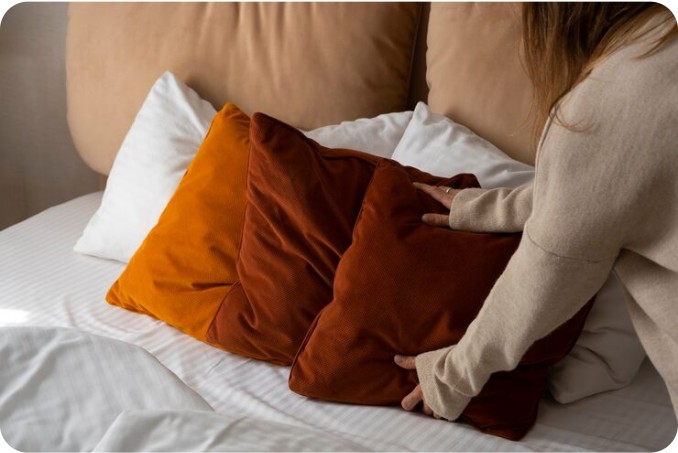
We stand at a fascinating crossroads in the history of sleep. For millennia, we have relied on natural materials and intuitive practices. Now, a new era is dawning where data, biotechnology, and conscious design converge to transform the passive act of lying down into an active, optimized bio-ritual. The bed of the future is not just a piece of furniture; it is an intelligent partner in our pursuit of well-being.
Part 1: The Quantified Self at Rest: Data-Driven Sleep Optimization
The first wave of sleep tech gave us trackers that monitor our vitals. The next wave integrates this data directly with the bed’s environment, creating a closed-loop system for restorative sleep.
- The Responsive Micro-Climate: Imagine a duvet with integrated, biometric-sensitive phase-change materials (PCMs) that activate cooling or heating in direct response to your skin temperature fluctuations measured by your wearable. Or a mattress pad that gently warms your core as your body temperature begins to drop in the early morning to prevent premature waking.
- Dynamic Support: Advanced mattresses now go beyond simple firmness adjustments. Using real-time pressure mapping, they can automatically micro-adjust air chambers throughout the night to alleviate pressure points on your hips and shoulders the moment you turn, ensuring uninterrupted spinal alignment.
- The “Sleep Score” That Acts: Your sleep tracker’s score wouldn’t just be a number; it would be a command. A poor “Sleep Readiness” score in the evening could prompt your smart lighting to adopt a more aggressive wind-down hue, while your pillow speaker could play a specifically calibrated soundscape to enhance slow-wave sleep.
Part 2: Bio-Hacking the Bed: Materials with Intent
Moving beyond passive comfort, the next generation of fabrics and fills are being engineered with specific biological outcomes in mind.
- The Cognitive Calm Pillow: Infused with micro-encapsulated scents like lavender and vetiver, the pillow releases these calming compounds in response to the heat and pressure of a restless head. It’s not just a scent; it’s a targeted, timed delivery system for relaxation.
- Fabric as a Supplement: Sheets and pajamas woven with Celanese™ or other cellulose-based fibers can be embedded with minerals like zinc or compounds like melatonin. Through gentle, sustained dermal contact, these “cosmetotextiles” aim to soothe skin and promote a natural sense of drowsiness.
- The Haptic Lullaby: For those soothed by rhythm, technology is being miniaturized into bedding. A lightweight, weighted blanket could contain a network of subtle, silent haptic motors that pulse in a slow, rhythmic pattern mimicking a resting heartbeat or gentle breathing, guiding the user’s own body into sync.
Part 3: The Circadian Architecture: Designing for Light and Darkness
Our circadian rhythm is our master biological clock, and the modern bedroom is often its greatest enemy. The future bed space is designed as a fortress for this rhythm.
- The Truly Dark Sanctuary: Blackout curtains are just the beginning. The next level involves light-emitting diodes (LEDs) integrated into the bed frame or headboard that emit specific, low-wavelength amber and red light for evening reading. This light provides illumination without suppressing melatonin, unlike the blue light from standard bulbs and screens.
- The Simulated Dawn: Instead of a jarring alarm, your entire bed environment could orchestrate your wake-up. Thirty minutes before your target time, a “Dawn Simulator” pad under your sheet would begin to emit a very gentle warmth, mimicking the sun’s first rays, while your ambient lighting slowly brightens to a soft, golden hue, coaxing your cortisol levels to rise naturally.
Part 4: The Ritual of Disconnection: The Analog Oasis
In stark contrast to the high-tech bed, a powerful counter-movement is emerging: the creation of the intentionally analog bedroom. This is not a rejection of progress, but a conscious curation of a sacred space for mental decompression.
- The Digital Detox Chamber: This philosophy mandates the complete removal of screens and smart devices from the bedroom. The focus returns entirely to the primal, tactile experience: the weight of a linen duvet, the scent of solid cedar from a bed frame, the sound of a paper page turning, the feel of hand-stitched quilting.
- The Art of “Nothing”: In this space, the bed is not for answering emails, scrolling social media, or watching stressful news. It is reserved solely for sleep, intimacy, and restful reading. This strict boundary work is perhaps the most powerful “technology” of all for combating the insomnia of the modern mind.